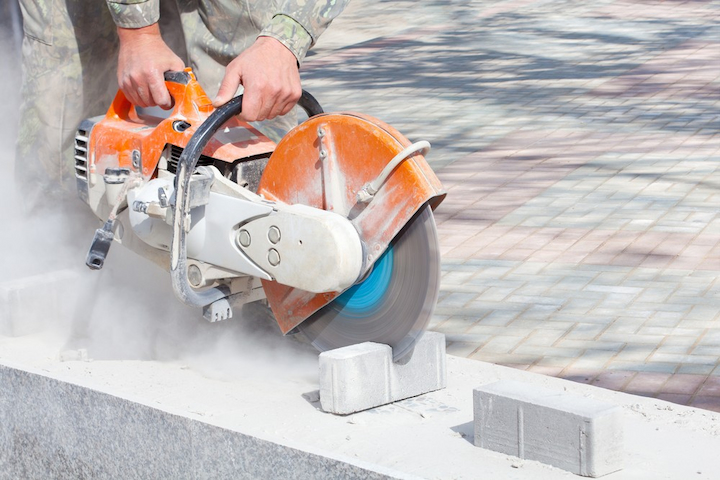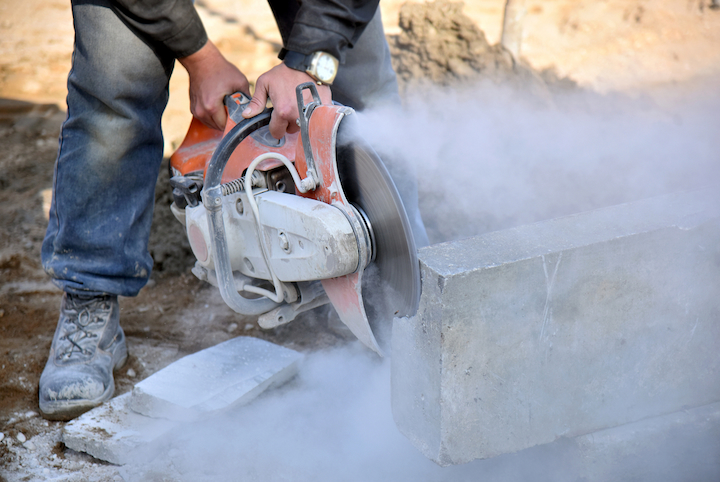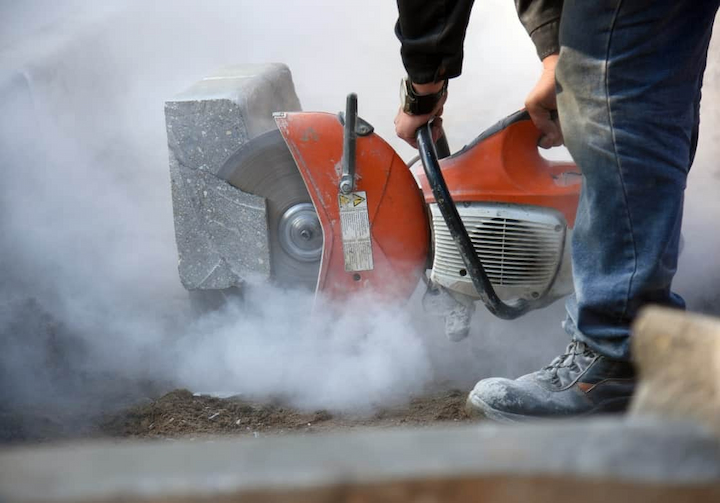Concrete Saws: How to Get the Most Suitable One For the Job
Regardless of whether it’s renovating a building foundation, kicking off an infrastructure upgrade, or undertaking a major rescue operation, cutting concrete is a tough job. Even without any extra additives or hardeners, common ordinary Portland cement (OPC) is formulated to withstand decades of structural, environmental, and destructive use, and it takes an extraordinary collection of tools to cut it once it’s cured.
A lot depends on thickness, though. An Australian Standard (AS)3600- or 2870-compliant sidewalk is normally 75-100mm thick, while the reinforced concrete slabs used in driveways can vary from 150-200mm. A few millimetres here or there may not seem like much, but it’s a lot if you’re not using a saw and blade combination that’s meant for the job at hand.
Let’s take a look at some of the concrete-cutting equipment that’s available, and see what you need to successfully and safely cut through even the toughest cement and aggregate compositions around.
Choosing the Right Concrete Saw for the Job

source: vicsawing.com.au
Believe it or not, although sawing through concrete is a highly specialized task, there’s an incredibly broad range of options to choose from when it comes to equipment. That’s also why when you invest in a concrete saw, you want to be sure that you’re getting the correct type and size of equipment for the exact type of cutting that you’ll be doing.
Make no mistake: unlike a lot of less specialized types of rotary cutting tools, concrete saws, sometimes referred to as consaws, can get expensive. Type and size make a big difference in that price, and there are 3 main types to choose from.
- Handheld saws. Handheld saws range from lightweight 6kg saws with 88mm cutting depths, to powerful 14kg cutters with 127mm cutting depths; and are used for everything from brick and cinder block, to curbstones and rebar-reinforced concrete slaps.
- Floor saws. These extra heavy-duty joint and floor cutters are mounted on high tensile wheeled frames, boast cutting depths up to 195mm, and are the preferred cutters for concrete roads and highways, and other massive civil works.
- Chainsaws. Instead of cutting into substrates at an angle like handheld and floor saws, a concrete cutting chainsaw cuts into them nose-first, making it possible to slice through all kinds of concrete aggregates and soft stone substrates to depths of up to 200mm.
And again, the type of cutting being done is a significant factor in choosing the right saw. An easily managed handheld concrete saw may be ideal for making fine cuts on concrete countertops, but a high-powered floor saw with a cutting guide is the best option for making long straight cuts in reinforced concrete slabs.
No matter which type of consaw for sale you choose though, you need to bear in mind that the types of concrete you’re cutting and the locations you expect to work at can all have an impact on the type of saw you need. That even includes how you plan to power it.
How Your Concrete Saw is Powered Makes a Difference

source: megasaw.com.au
Power sources are another factor to consider when looking at concrete saws for sale, and each has its own unique set of advantages and disadvantages.
- Petrol powered. With heavy-duty motors that can produce as much as 3.7kW in handheld models and up to 8.7kW in floor saws, petrol-powered saws are the most powerful. They require healthy doses of maintenance, though; and they’re also the heaviest, noisiest, and most physically demanding saws to operate.
- Electric powered. With a 220-240V motor and average 2.2kW output, an electric concrete saw is easy to maintain, can be used indoors or outdoors, and is lighter and quieter than a petrol-powered unit. Electric saws can only be used where a plug-in power source is available though, making them nearly impossible to use in early construction, or late demolition project stages.
- Battery powered. Cordless, 18V and 36V (2 x 18V) lithium-powered concrete saws are largely the same as electric-powered saws, but their lightweight brushless motors make them the smoothest, quietest running, and easiest to use concrete saws there are. You can take a cordless power concrete saw anywhere, but you’ll probably need 2 or 3 spare batteries to keep the work moving.
Naturally, there’s a correlation between the type of cutting that you need to do and the type of power source that’s going to be most effective. A battery-powered concrete cutting saw is the optimal choice for convenience and easy handling, while the heaviest outdoor jobs are almost exclusively the domain of more powerful, petrol-powered saws.
Remember; cost, accessibility, and the amount of cutting you need to do will all have a bearing on the power source. Even the amount of emissions you’re able to produce while cutting is determined by the power source, and that’s especially important because of the inherent risks associated with concrete dust.
Wet and Dry Cutting Tools That Make Health a Priority

source: homestratosphere.com
Dust creation and heat are also aspects of saw selection that you also need to remain mindful of. The highly dangerous, respirable silica dust particles that every concrete cut off saw generates are an unavoidable byproduct of the cutting process. That’s why most saws are also compatible with features that allow them to keep the spread of debilitating dust particles to a minimum.
- Wet cutting kits. With wet-cutting kit compatibility, a progressive water value on the concrete saw is used to introduce a constant flow of water onto the cutting blade to aid with both binding the excess dust and blade cooling.
- Dry cutting kits. Dry-cutting kit compatibility allows for the attachment of a vacuum accessory that allows you to draw excess dust away from the cutting area and into a separate filtration and containment system.
Ideally, both systems are effective at reducing the dangerous dispersion of concrete dust, but the vital blade cooling that’s afforded by wet cutting kits offers a supplemental safety advantage. Reducing heat build-up along the saw blade’s diamond segments is critical to ensuring that they maintain their bond to the blade core. Concrete saw blades are expensive, with two-part components, and allowing a blade to overheat leaves it perilously prone to warping, a loss of segments, and ultimately shattering.
That’s why when you’re looking at concrete saws online, you can be sure that a model that features wet-cutting compatibility is one that’s going to give you the biggest benefit when it comes to occupational safety.
The Final Word
At the end of the day, selecting the right saw is all about carefully assessing your requirements before you buy one. Not surprisingly, no one type of saw is going to be able to do everything, so you’ll have to decide precisely how much power and mobility you need before you make your purchase.
Once you’ve examined the benefits that each one has to offer though, you can rest assured that the concrete saw you choose is going to be one of the best, and most reliable power tool investments that you’ve ever owned.
